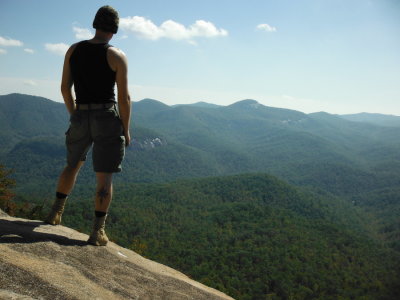 There are so many rating systems that it can be confusing or misleading. And when it comes to off-trail wilderness hiking, which we did a lot of in the Outer Hebrides, you really need a guide who knows the terrain to estimate what sorts of challenges you can handle. In less wilderness areas, of course, we all get a kick out of doing off-trail explorations on our own. Not always a good idea.
There are so many rating systems that it can be confusing or misleading. And when it comes to off-trail wilderness hiking, which we did a lot of in the Outer Hebrides, you really need a guide who knows the terrain to estimate what sorts of challenges you can handle. In less wilderness areas, of course, we all get a kick out of doing off-trail explorations on our own. Not always a good idea.
Many difficulty- rating systems are based on altitude changes, steepness of grade, length, agility-requirements, and risks (eg weather, cliffs, boulder fields, etc.). Other rating systems are based on technical difficulty alone.
I'll pick one example: the famous and popular Tuckerman Ravine trail up New Hampshire's Mount Washington. Alltrails rates it as Hard on their Easy/Moderate/Hard system. But what does that really mean? 9 year-olds prance up it with daypacks. What it means is that there is a substantial altitude change, variable weather (foolishly-unprepared people have died of exposure up there but it would be difficult to be that stupid), and high rocky steps at times, but it is a relatively easy hike if you are in good health and cardio condition. It's a 7-hr hike up to Lion's Head and back down - what Europeans call "hill-walking." In the European system, the Tuck hike probably would be rated in the 2 range on their 1-5 rating system.
Several of our Hebrides hikes would be rated Hard (if you sometimes have to be on your hands and knees grasping rocks and heather to get up the steeps) in some US systems, but all were around level 2-2.3 in the Euro system. I like that Euro system which takes into account your fitness level and the hike's challenges.
In my view, though, those Euro ratings - "Easy" to "Expedition-Level" - do underestimate the challenges. The Euro level 2 to 2.3 range is plenty for me. On level 3, I suspect that I would be a slowpoke in a group. People do not like to have to wait for the slowpokes. On straight steep uphills, off-trail, with unstable footing, I need a minute to catch my breath every 20-30 steps. I call that "admiring the scenery" or "taking a picture."
Since we're talking about hill-walking - all-terrain hiking - and not technical mountaineering, we are mostly talking about stamina and cardio conditioning. Strength is not a major factor but mental and physical stamina are.
Trailmaster posts about two common American rating systems in Choosing a Difficulty Level for Your Hike is a Key to Wise Hike Planning
Here's another piece about different rating systems for hikes and mountain bikers: TRAIL DIFFICULTY RATINGS SIGNS
And yet another to rate hikes you have taken: Hike Evaluation Calculator
Photo is from the popular hill walk/climb, Breakneck Ridge Trail in the very pleasant village of Cold Spring, NY. It's a 6-mile hill walk but the first mile involves lots of scrambling and a 2000-foot altitude change which is why some people rate it at a rather high - too high - 3 because anybody in decent shape can do it.


 There are so many rating systems that it can be confusing or misleading. And when it comes to off-trail wilderness hiking, which we did a lot of in the Outer Hebrides, you really need a guide who knows the terrain to estimate what sorts of challenges you can handle. In less wilderness areas, of course, we all get a kick out of doing off-trail explorations on our own. Not always a good idea.
There are so many rating systems that it can be confusing or misleading. And when it comes to off-trail wilderness hiking, which we did a lot of in the Outer Hebrides, you really need a guide who knows the terrain to estimate what sorts of challenges you can handle. In less wilderness areas, of course, we all get a kick out of doing off-trail explorations on our own. Not always a good idea.